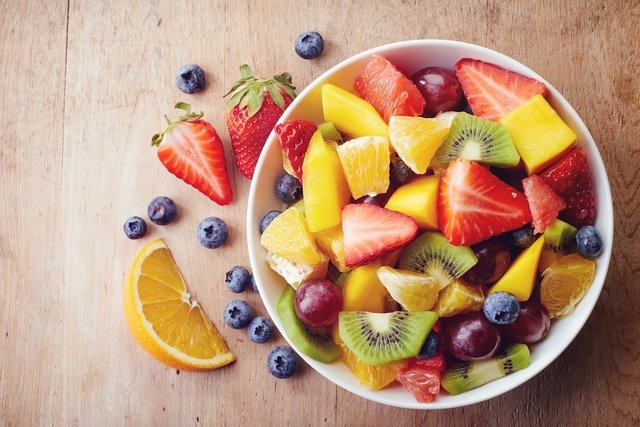Fructose, also known as “fruit sugar”, is a monosaccharide naturally present in fruits, honey, legumes and vegetables, such as beets, onions and carrots.
In addition, fructose can also be produced in the form of fructose syrup, sucrose, sorbitol or corn syrup, which are used to sweeten processed foods such as cookies, juices, cakes, sauces and soft drinks.
The fructose naturally present in fruits does not cause harm to health, as these foods contain little fructose, in addition to being rich in fiber that reduces the absorption of sugar by the body. Artificial fructose can promote the emergence of obesity, high uric acid and diabetes.

Does fructose make you fat?
Excessive consumption of fructose, especially when added to processed foods, can make you gain weight. This is because fructose is metabolized directly in the liver and, when in excess, stimulates the production of fat cells in the body.
Why can fructose be harmful?
Excessive consumption of fructose can be harmful, as it favors the production of fat in the liver, causing the following situations:
- Increase levels of “bad” cholesterol and triglycerides in the blood;
- Promote the emergence of cardiovascular diseases;
- Increase the accumulation of fat in the liver, causing hepatic steatosis;
- Cause insulin resistance and diabetes;
Excessive intake of fructose can also increase uric acid levels in the blood, favoring the onset of gout, an inflammatory disease that causes joint swelling and pain. Learn more about the symptoms of gout.
Furthermore, this type of sugar is not recommended for people with fructose intolerance and people with irritable bowel syndrome, as it can cause symptoms of abdominal bloating, excess gas and diarrhea.
High fructose corn syrup
High fructose corn syrup is an industrial sweetener that can be found in processed and ultra-processed foods, such as cookies, breakfast cereals, candies, cereal bars, canned goods, seasonings and sweets.
In addition, it can also be used to sweeten drinks, such as concentrated juices, powdered juices, carbonated drinks and flavored water. This type of sweetener is used due to its low cost, high sweetening power and yield compared to other nutritional sweeteners, such as sucrose, for example.
Long-term, excess intake of fructose from high-fructose corn syrup may increase the risk of metabolic disease.
Is the fructose present in fruits harmful?
When consumed in moderation, the fructose present in fruits is not harmful to your health. This is because fruits are low in this sugar, in addition to being rich in fiber, which helps control blood sugar levels, preventing the formation of fat cells and weight gain.
Furthermore, fruits also have excellent amounts of vitamins, minerals and antioxidants, which help to strengthen the immune system and fight free radicals, helping to prevent diseases such as obesity, heart attack, stroke and cancer.
Therefore, it is recommended to consume between 2 and 3 portions of whole fruit per day and, whenever possible, with the skin and pomace, because it contains more fiber and a lower fructose content. Fruit juices should be consumed in moderation, as they contain more fructose and less fiber, which can increase blood sugar levels.
Foods rich in fructose
The following table contains the amount of fructose in each 100g of food:
Furthermore, fructose is also present in small amounts in vegetables such as carrots, lettuce, tomatoes and cucumbers, and legumes such as beans, lentils and chickpeas.
To avoid excessive consumption of fructose, it is important to always check if food labels contain fructose syrup, sucrose, sorbitol or corn syrup in the list of ingredients. Learn how to check food labels.



